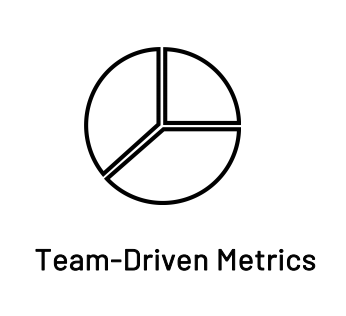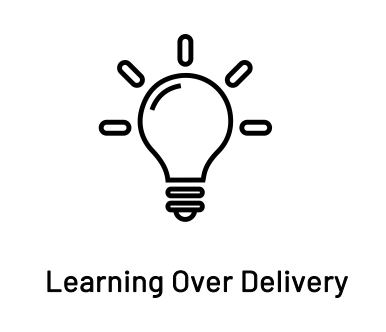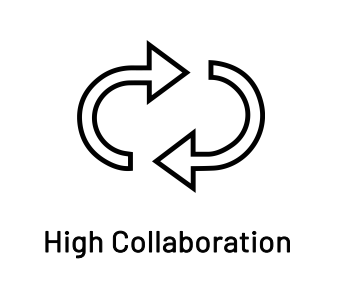Four Keys to Organizational Transparency – Brought to You by Agile
Building trust takes time, restructuring around customer value takes more time, and changing culture, takes even more time. The success of each of these ongoing endeavors depends largely on transparency within an organization. When is the best time for an organization to build in more transparency? As a Chinese proverb says, “The best time to plant a tree was 20 years ago. The second best time is now.”
It’s easy as an outsider on many consulting projects to walk into a customer or potential customer and see whether they have a transparency problem. Several telltale signs may indicate that an organization has difficulties with transparency and raise red flags.
The most obvious one is when individuals or teams are afraid of or lack the psychological safety to voice their opinion or have constructive debate that would increase value delivery, but potentially threaten timelines or budgets. Instead, they fall into line based on the hierarchy of their organization. This leads to a lack of accountability, shifting blame, and finger pointing when things go awry, as negative performance and difficult conversations are delayed as long as possible due to an underlying sense that punishment is imminent.
With that in mind, here are four keys to develop and ingrain long-term transparency into your culture and organization.
First Key – Lean into Learning
We teach that it is okay to fail as long as you learn, so you can move on quickly and iterate as you learn. In Agile, these “fail fast to learn quickly” feedback loops provide the team a means to experiment and innovate, provided the team delivers together and not as a group of high performing individuals. You can tell whether people are individually focused or team focused by the learning processes built into their culture.
One way many look at a team’s effectiveness is from the standard Project Management standpoint, i.e. using project management metrics. You look at things like budget, scope, schedule, and performance. However, when you dig into the budgets or scope, neither shows you the real value of the team’s delivery. When you lift up the covers and look at what the team creates, you gain real insight into overall progress by actually observing working product on a regular basis. This can only be achieved when teams embrace a culture of learning to understand how to become a high performing team, realize efficiencies through Lean-Agile processes, and drive personal development.
Second Key – Start at the Top
Transparency and trust are a common “chicken and egg” problem in that everyone wants both, but few agree on where it starts or with whom. Almost every time, developing greater trust starts at the top and is a top-down process. When you operate from the assumption that people are doing the best they can within the constraints they have to work within, the two primary things you can change are the technology which they use, and even more importantly, the environment they’re working in. Both of these are often on the shoulders of leadership—at least at the start of the process.
This is where it comes down to building a culture of trust, when you have transparency that goes both ways. To paraphrase a concept from SAFe, “Transparency is the enabler of trust.” However, when you start adding transparency, those who are not familiar with that culture will often act out of fear in opposition to transparency. Those fearing punitive responses will fight transparency for fear of being held accountable for things out of their control. That’s where it’s imperative for leadership to step in and reinforce the concept that: , “It’s okay, we know as an organization we’re here, we want to get there, how do we embrace this to move forward and improve?”
You hear people say, “Trust the process.” Scaled Agility states it better: “The process creates trust.” Trust is built over time and that’s where leaders really need to make sure they’re very consistent with the behavior related to transparency and how they deliver it to their organization. They have to be more consistent than anyone else, until the culture is built. It has to be more than lip service too. Leadership can’t say, “Oh yes, we need to be transparent, we need to have trust”, and then expect the rest to simply happen. This is the difference between engaged leadership and supportive leadership.
Third Key – Continue to build on trust to create a Culture of Trust
It starts with the thought or notion that failure is not necessarily negative, but it’s something we can improve on as long as we are learning from it. This doesn’t mean you can’t push your people. This cultural shift is referred to as a “generative culture” in the SAFe vernacular, where you push people to be more efficient as they become better, but you don’t push too hard just for the sake of the project, deliverable, or committed date. Instead, you have to motivate them in the right direction and let them understand that you’re pushing them and why you’re pushing them, which ultimately helps in their personal development and in the overall betterment of the team to drive greater business value.
Part of transparency is also identifying how the work takes place and how it moves everyone toward the vision, mission, and strategy of the organization or enterprise. When people connect the reason for their work to achieve part of a strategic initiative and how it drives the success for their team, it begins driving these values deeper into your culture.
Fourth Key – Communicate and Repeat What’s Important
Ideally, we would love to see IT collaborate with the business to better identify the needs of the business and customers. But without the right level of communication or transparency, what we find is that the business often blames IT for not creating the right value and/or experience and on the other side, IT often blames the business for not providing enough detail to create the proper solutions. Transparency goes both ways and it helps alleviate problems from both sides—once we can get them trusting each other.
Leadership has to communicate consistently and repeatedly, both for the good and the bad. Let’s take an example about communicating something negative. Many companies in our current market condition are faced with doing layoffs and exercising cost-cutting measures in order to save their organizations. How do you be transparent about that and how do you do it in a way that people better receive it because they’re already used to receiving consistent communication? Constant transparency makes it possible to deliver a negative message with honesty and empathy about tough business decisions, because they make business sense. In the end, it may not be a favorable communication for some, but the leadership that prevails is from those who make an effort to develop trust and be transparent.
Results of Transparency in a Scaled Agile Environment
Lose the waste and become predictable – Transparency exposes waste within a lean enterprise’s processes. By removing the bottlenecks, it reduces delays and reduces the time it takes to complete work, so you can move faster tomorrow. From an iterative delivery or flow perspective, these shorter timeboxes and periods of delivery provide better insight into whether you’re building the right thing at the right time and drives predictability for consistent delivery.
Accelerate decisions
Communication delays often come from not making decisions at the right level and when there is a lot of back-and-forth or up and down within the decision-making process. Transparency helps us in the decision-making process to determine who is the right person to make that decision, which can ultimately define whether the work continues on pace or comes to a standstill. We also know how much has been done, how the project ties to our budgets, whether we are aligning our resources correctly, and if we are putting our money in the right place based on what we consider the best economic decisions. The waste could also be inefficient tools that have organizations doing things manually and add time to decision-making.
Transparency is built into the Lean-Agile processes we help clients utilize, but the right tooling is incredibly important for traceability and the reasons just mentioned. So whether it’s Jira, Rally, or any other work management tool, you can begin to see data in real-time and provide executives a better view without sugar coating actual status.
Add value to the top and bottom line
Another benefit driven by efficiency is being more productive with the people you have. A common belief is that an Agile Transformation will yield cost savings. While that can be true, the focus should be shifted to the increased productivity and value generated with the same or similar number of people.. Usually executives like to hear what the ROI will be of the transformation, because their objectives may come down to maximizing value for their shareholders.. Incremental delivery of the right product to market more quickly can improve your top line generating revenue earlier, while the more we drive efficiency throughout the organization, the more streamlined the value flows to the customer.. One of the biggest values of a customer’s Agile Transformation is that transparency allows for all of this to happen to produce tangible results to both the top and bottom line.
Know the status and the impact
The goal is to have real-time status about the products or services we are creating, how they’re impacting budgets, and how we can maneuver incrementally throughout the course of the year as opposed to annually based on typical budget cycles.
Understand how you provide value
The last big benefit of implementing SAFe methods and tools is one that is often overlooked because it seems too hard is Value Stream Identification. When companies identify and understand their Value Streams, they begin to understand from a strategic perspective how work is generated and completed, and to start thinking about how to remove functional silos to improve the flow of the work. This naturally drives more transparency to every area of the business. There is a lot more to this topic, so we’ll save that for a follow on blog. But suffice it to say, that when you know the real value of each organization and how they contribute to the value a customer experiences, transparency will flow up and down your value chain.






